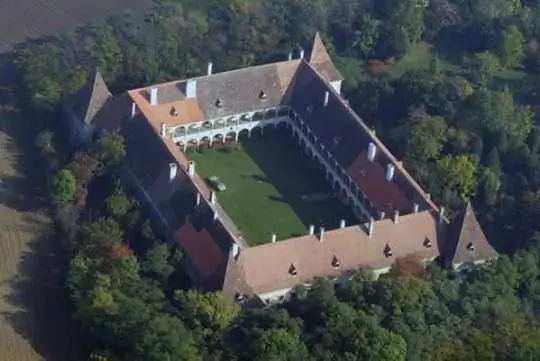
Description of the attraction
Deutschkreuz Castle is located on the territory of the Austrian federal state of Burgenland, at a distance of only 5 kilometers from the Hungarian city of Sopron. It is a unique surviving example of a Renaissance castle, famous for its unusual square shape.
Originally, there was a medieval fortress on this site, mentioned for the first time in 1492. In 1535 it passed to the ancient Hungarian noble family of Nadashd. One of its most famous representatives, Tomas III Nadashd, ordered to demolish the dilapidated fortress and build a more modern castle. Construction, which began in 1560, dragged on for several decades and was finally completed only in 1625. From that moment on, the castle has survived to this day in an almost unchanged form. However, it is worth noting that after clashes with Emperor Leopold I, the Nadashd family lost this castle, and in 1676 it went to another noble Hungarian family - the counts of Esterhazy. However, they had their own private residences, and they hardly lived in this palace.
After World War II, Soviet soldiers were housed here for ten years, turning the castle into a barracks. Unfortunately, this negatively affected the well-being of the already abandoned castle - the interior was destroyed, and the palace chapel was completely destroyed. Only in 1957, work began on the restoration of this architectural monument.
The Deutschkreuz Palace consists of 4 elongated buildings, united with each other and ultimately making up a square. In the middle of this square is a spacious courtyard. Each wing of the castle is only two stories high, with skylights on a sloping tiled roof. The sides of the buildings that open onto the courtyard are arcaded galleries supported by graceful thin columns. On the outside of the castle, there are 4 powerful corner towers on the sides.
Since 1966, the castle has been a private property - it belongs to the Austrian artist Anton Lemden, who was engaged in a thorough restoration of the palace. It was thanks to him that the old tapestries, painting and stucco moldings that adorned the walls of the chapel and the living quarters of the castle were restored. Also, antique furniture was brought here, as well as paintings painted by Lemden personally are exhibited here.






